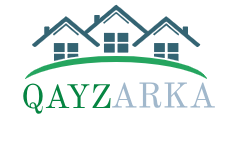Table of Contents
Introduction:
In today’s rapidly evolving world, risk assessment plays a pivotal role in various domains, from finance to healthcare and cybersecurity. AI risk assessment models have emerged as a powerful tool to enhance the accuracy, efficiency, and effectiveness of risk evaluation. In this article, we will delve into how AI risk assessment models are revolutionizing risk analysis and where they can be applied to elevate risk assessment.

The Role of AI Risk Assessment Models:
AI risk assessment models are designed to process and analyze large volumes of data, identify patterns, and make predictions. By harnessing the capabilities of artificial intelligence, organizations can significantly enhance their risk assessment procedures in the following ways:
- Improved Data Processing:
AI models can swiftly process vast datasets, which might be overwhelming for human analysts. This speed ensures that risk assessments are up-to-date and comprehensive, helping organizations make informed decisions.
- Pattern Recognition:
AI models excel at detecting subtle patterns and anomalies within data, which might be challenging for traditional methods. This capability is especially valuable in identifying potential risks in various sectors, such as financial fraud or medical diagnoses.
- Predictive Analytics:
AI risk assessment models can predict future risks based on historical data, making it easier for organizations to prepare for potential threats and mitigate them before they escalate.
ALSO READ Demystifying Cactus AI: A Comprehensive Overview 1
Applications of AI Risk Assessment Models:
AI risk assessment models find application in diverse domains, revolutionizing risk analysis. Here are some areas where they play a crucial role:
- Financial Services:
In the financial sector, AI risk assessment models are used to predict market trends, assess credit risk, and detect fraudulent activities. This helps banks and financial institutions make more informed lending decisions and protect themselves from potential losses.
- Healthcare:
AI models aid in diagnosing diseases and predicting patient outcomes based on medical records and genetic information. This enhances the accuracy of medical assessments and improves patient care.
- Cybersecurity:
AI-powered risk assessment models analyze network traffic, identifying potential security threats and vulnerabilities. This proactive approach helps organizations defend against cyberattacks.
- Environmental Risk Assessment:
AI models can analyze environmental data to predict and mitigate natural disasters, such as floods and wildfires. These models provide valuable insights for disaster management and preparedness.
- Supply Chain Management:
AI risk assessment models help organizations predict supply chain disruptions, allowing them to proactively address potential issues and maintain a seamless flow of goods and services.
It would be beneficial to include images in the following sections:
- Financial Services: An image of a financial data visualization, showing how AI risk assessment models are used to predict market trends.
- Healthcare: A graphical representation of how AI models process medical data to aid in disease diagnosis and patient outcome prediction.
- Cybersecurity: A network diagram illustrating how AI models monitor and identify potential security threats in real-time.
- Environmental Risk Assessment: A visual depiction of AI models analyzing environmental data to predict natural disasters.
- Supply Chain Management: An image showcasing the use of AI risk assessment models in maintaining efficient and resilient supply chains.
Conclusion
AI risk assessment models have the potential to transform risk assessment across various industries. By leveraging their data processing, pattern recognition, and predictive capabilities, organizations can make more informed decisions and proactively manage potential risks. Whether it’s in finance, healthcare, cybersecurity, or environmental risk assessment, AI models are elevating risk assessment to new heights, ensuring a safer and more secure future.


1 thought on “Elevating AI Risk Assessment Models”